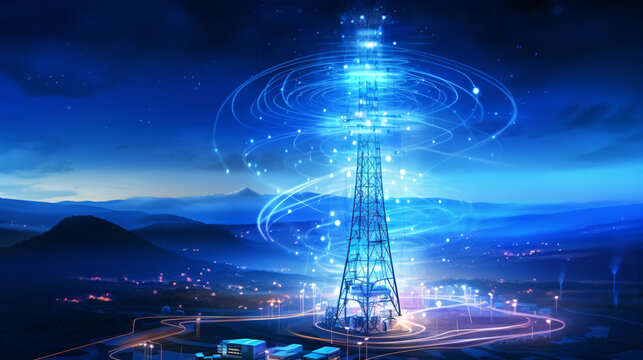The Development and Influence of Telecommunication is the backbone of modern society, allowing people to communicate and connect easily over hundreds of millions of miles. From origins in the 19th century when a telegraph was invented, telecommunications has undergone some tremendous transformation and development through diverse technologies that have become a complex network which supports daily human interactions, trade, and entertainment in modern times.
Background History
The true prelude to the telecommunication revolution in this regard was with Samuel Morse’s telegraph, which in 1830 could send messages to anyone at any point on earth using coded signals. It was based on this that Alexander Graham Bell was to come up with the telephone in 1876. This meant it would be possible to transmit voice over the wires and, therefore, link people in ways hitherto unimaginable.
Radio. Early in the 20th century, radio presented itself. Wireless communication was no longer limited to the plugged-in of wired telegraph and telephone. Television in the 1920s and 1930s added the dimension of the visual to the communication process, enabling us to develop multimedia type interactions. Each build on the step before it, bringing us to where we stand today in this interconnected world.
The Digital Age
Digital technology in the late 20th century was the actual paradigm shift. Digital signals allowed for the sharper transmission of information than analog signal could, more data transferred, and greater security. The Internet revolutionized telecommunication in the 1990’s; finally, it allowed instant communication through e-mail and messaging other social media platforms. This change did not only transform personal communication but went on to change business activities; thereby making global commerce and collaboration easier than ever.
The advancement in mobile technology further intensified this transition. Smartphones or the non-traditional cellphone, which brought together the functions of a traditional telecommunications device and computing capability, started to emerge at the beginning of the 2000s as people began to not only carry around information but also communicate on the go, revolutionizing education, business, and social interactions in ways that were hard to contemplate.
Current Trends
Telecommunications today are developing rapidly. With the implementation of 5G technologies, mobile connectivity is expected to be further improved in speed and latency, which is going to innovate tremendous applications such as the Internet of Things. Applications, for instance, that would also benefit from increased bandwidth and reliability offered by 5G include smart cities, autonomous vehicles, and telemedicine.
Not only that, but the growing significance of cybersecurity in telecommunication is crucial to be focused on as a large number of devices are interconnected. Communication channels must be secured to prevent the misuse of personal data and maintain the trustworthiness of digital services.
Challenges and Future Directions
Many strides have been made in the telecommunications sector, but several challenges are still affecting it. The main challenge is the digital gap where many people in rural and other underprivileged areas are denied their right to trustable internet and communication technology. This gap should be filled for an effect to be seen towards inclusiveness in the digital age so that access can be provided for everyone to take advantage of this age.
It also has regulatory issues and market competition. Companies vying for the leading position are creating a challenging environment, ensuring fair practice, and their protection to consumers.
Looking into the future, the adoption of AI and machine learning into their lines promises to provide better customer experience, optimal management of networks, and eventual improvement in service delivery. Advances in satellite technology can expand coverage geographically; a vast portion of this area may be extensively reached.
Conclusion
Telecommunications have surely come a long way from the early days, continuously adapting and changing to the needs of society. Further importance will be placed on effective communication with this advancement in technology. The potential of connecting people and ideas will connect the world like never before; the future of telecommunications will merely shape the world in profound ways for economic growth, innovation, and our everyday lives.
